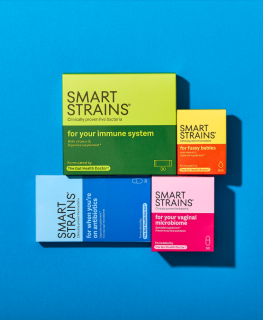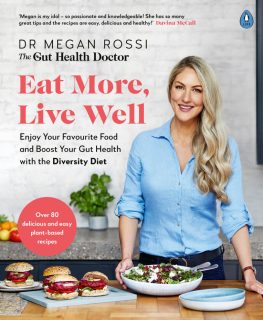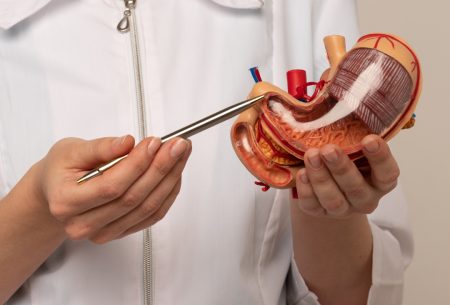We’re diving into a new review paper (that pooled together over 100 studies to get a fuller picture), looking at how a gluten-free diet can influence our gut microbes and top tips for a balanced diet.
But first, a quick recap.
What actually is coeliac disease?
Some people think of it as an intolerance, but coeliac disease is actually an autoimmune disorder where the body’s immune system mistakes gluten as a threat and attacks its own intestine. Although the cause isn’t completely clear, it’s thought that our genetics and environmental influences are key factors.
It affects at least 1 in every 100 people in the Western world and currently the only effective way to manage it is completely excluding gluten (a protein found in food products including all types of wheat including spelt and kamut, as well as rye and barley).
Can following a gluten-free diet affect our GM?
Our diet plays a major role in the make-up of our GM (gut microbiota, the trillions of microbes living within us), which in turn has a big influence on our overall health.
People with coeliac disease following a gluten-free diet have been found (in observational studies, at least) to have lower levels of health-promoting bacteria (called Bifidobacterium, B. longum and Lactobacillus) and higher levels of ‘unhealthy’ bacteria (e.g. Enterobacteriaceae).
Why? It’s thought that these differences in GM composition are likely because of lower intakes of wholegrain fibres on a gluten-free diet. And it’s these wholegrain fibres that are known to produce beneficial short-chain fatty acids (SCFAs), which help strengthen our gut lining, among many benefits.
Gluten-free foods: what’s missing?
In the review, gluten-free foods were on average found to be lower in protein and dietary fibre, but higher in fat and salt compared to their equivalent gluten-containing products. Although, in somewhat good news, there does seem to be a growing trend towards increasing the fibre content of these products.
Even though it’s a step in the right direction, foods with added fibres (such as gluten free bread with an added fibre powder) don’t seem to have quite the same health benefits as having fibres in their natural state (e.g. quinoa grains).
It’s also important to note that people with coeliac disease (most commonly at diagnosis when they’re still eating gluten) were shown to have a higher risk of micronutrient deficiencies including iron, calcium, zinc and other vitamins (folate, B12, A, D, E and K). This is likely because of the damage that gluten can do to the intestine and therefore inhibits the intestine’s ability to effectively absorb these nutrients from your food. We also see this first hand at The Gut Health Clinic.
Even when following a strict gluten-free diet, several studies have still reported people with coeliac disease are at a higher risk of micronutrient deficiencies. Given sticking strictly to the diet results in complete intestinal healing for most, it’s suspected these nutrient deficiencies are because of the nutritional quality of gluten-free options.
Taken together, making an effort to maximise key nutrients in a gluten-free diet is super important for not only helping to restore the diversity of the GM (and remember, having a more diverse GM is linked with better health outcomes), but also to get enough micronutrients.
How can you make sure you’re getting the nutrients you need on a gluten-free diet?
Here are our top tips to help you follow a nutrient dense gluten-free diet for those with coeliac disease:
-
Think about what you can include, rather than what you can’t. There are so many naturally gluten-free grains that are more accessible now than ever before (quinoa, gluten-free oats, corn, buckwheat, amaranth, teff, wild rice etc.), so try not to see it as something you’re missing out on. Your gut will thank you!
-
Fill up on fibre. Aim for 30g of fibre a day from all 6 different plant-based food groups.
-
Eat lots of variety – the more, the merrier. Gluten-free doesn’t have to mean boring! Tuck into a full range of food groups, across fruit, vegetables, potatoes, nuts, seeds, beans, pulses, herbs and spices, fish, eggs, fermented dairy and lean meats.
-
Go for whole foods where you can – remember, a gluten-free label doesn’t necessarily mean it’s ‘good’ for you, as they often contain large amounts of added sugar as well as an array of food additives.
-
For packaged food products, it can sometimes be a hidden ingredient, so always check for allergens listed and a ‘gluten free’ label. If you’re unsure, ask the manufacturer.
For those who are finding the gluten-free diet costly (which it absolutely can be!), you are likely eligible for gluten-free foods on prescriptions through the NHS – chat to your GP about this option.
—
Ref: Melini, V. and Melini, F. 2019. Gluten-Free Diet: Gaps and Needs for a Healthier Diet, Nutrients.














